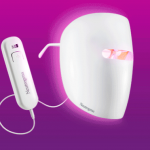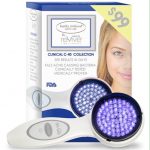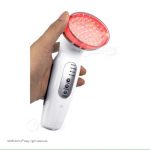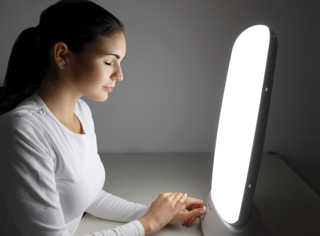“It is easy to display a wound, the proud scars of combat. It is hard to show a pimple”
-Leonard Cohen, The Favorite Game
What Is Acne?
Probably a silly question to ask, right? We all know what acne is. It’s those bright red zits that always showed up at the most inopportune times when you were 16. It’s those pestering black heads all across your nose that you can never seem to squeeze out. It’s those patches of red spots showing up on your cheeks when you feel far too old for it. We can all define acne, I’m sure. But why does our skin react the way it does?
Acne is an extremely common skin condition. According to HealthLine, a very common website dedicated to explaining medical conditions and the intricate details of them. In the Symptom Checker section of the website, HealthLine explains just what acne is.
“Acne occurs when the pores on your skin become blocked with oil, dead skin, or bacteria. Each pore on your skin is the opening to a follicle. The follicle is made up of a hair and a sebaceous (oil) gland. The oil gland releases sebum (oil), which travels up the hair, out of the pore, and onto your skin. The sebum keeps your skin lubricated and soft. If you develop acne, this may be because of one or more problems in this lubrication process. These possible causes include:
- too much oil or sebum is being produced by the follicle
- dead skin cells are accumulating in the pore
- bacteria has built up in the pore
An overabundance of oil, a pore clogged by dead skin cells, and bacteria all contribute to the development of pimples. A zit appears when the bacteria grows in the clogged pore and the oil is unable to escape.”
(HealthLine.com)
If your skin is repeatedly being affected by your pores being plugged, you may be struggling with acne. And no, you’re not crazy because you’re forty years old and have acne. Acne can affect people of all ages. From young children just entering puberty, to residents in nursing homes. Life isn’t like the movies and sometimes you just get acne.
What Causes Acne?
Acne can be caused by a wide array of things. Hormonal changes, such as puberty or pregnancy can cause temporary acne. There are certain medications that can increase the risk as well. Birth control pills and corticosteroids are just a couple examples. Diet also plays a major role in developing acne. Unhealthy diets, diets high in refined sugars, and diets high carbohydrates such as bread and chips make the body more susceptible.
People assume that they’re just not washing their face enough, or they need a new face cream, but most of the time that’s not the case. Hey, maybe washing your face did the trick. But for most people, that’s just not the case. Most people need some medical treatment without the crazy costs. Light Therapy is known to treat acne, especially in the form of Blue Light.
What Is Blue Light Therapy?
Blue Light Therapy is form of Photodynamic Therapy or Light Therapy that uses UltraViolet lights to treat condition related to the skin. Blue Light Therapy is proven to have treated some skin cancers. It also aids in minimizing superficial skin leisures, acne, wrinkles, and more. Blue Light Therapy has been working miracles such as warding off skin cancer, so why not take your chances and try to cure your acne. There’s a pretty high chance you’re going to achieve your goal.
Blue Light Therapy & Acne…
Blue Light Therapy helps cure acne by killing the bacteria in your pores called Propionibacterium acnes. This bacteria can cause inflammation. Propionibacterium acnes are extremely sensitive to blue light, thus making it easy to eliminate the bacteria in the oil glands on your face and body. Most Blue Light Therapy devices use infrared light (heat), which helps by shrinking the size of the oil glands. This leaves the skin with less oil and bacteria. Once the bacteria is removed from the skin, inflammation on the skin will go down. Inflammation is associated with red pimples, which is the most obvious sign of acne. Repeating the treatment as needed and recommended with effectively decrease the amount of blemishes on the skin and eventually restore the skin to it’s normal and natural self.
Blue Light Therapy can be used at home or in a dermatologist office depending on the patient’s needs. At home devices have been proven to have great results, which is definitely a lot simpler and less expensive than in office treatments. However, in office treatments are typically more aggressive due to the size of the technology. This form of the treatment can help treat a large area in a short amount of time.
Lisa Samalonis, a registered Dermatologist who writes for TheDermatologist.com, took to the website’s blog to address the benefits of Blue Light Therapy. Formatting her article in the form of a Question and Answer, Samalonis answered a question asking which of her patients she would recommend Blue Light Therapy to. Samalonis wrote,
“I recommend the blue light treatment to my acne patients with red pimples (inflammatory acne). In my clinical trial with an at-home use blue light (Silk’n Blue, Home Skinovations Inc.), my patients had good results treating not only mild, but moderate and even severe, cystic or scarring acne. The device features blue light pulses that destroy bacteria within follicles and pores beneath the skin’s surface, treating mild to moderate acne and helping to achieve bright, clear skin in the comfort of the patients’ own home. Continued usage resulted in a significant improvement for all types of inflammatory acne. All patients with concerns over unwanted acne are candidates for treatment, regardless of their skin tone or severity of acne.” (TheDermatologist.com)
If you’re struggling with acne, no matter what you’re age is, no matter what your skin color is, Blue Light Therapy is the treatment for you. It’s natural, has no known side affects, and is being proven every day to cure a skin condition that more than 85% of people in the United States deals with. What’s stopping you?







